By: Rogers Bardé
I began the search for Hugh Brent when Hopewell Museum received a gift of the portraits of Hugh Brent and his wife, Elizabeth Langhorne Brent. I wanted to know who Hugh Brent was and find out why my 4th great grandfather, William Rogers, named his youngest son Hugh Brent Rogers. I was told that Hugh Brent was William’s banker, and I began my search to find more of the story. It’s been a fascinating search and there’s more to find out. Rogers Bardé
The story of Hugh Brent, a merchant in the early days of Kentucky, presents a different image from the landholding plantation Virginia style large landowners. His enterprises were mercantile, and his children married the children of his merchant friends. His sons maintained their merchant status throughout their lives, and expanded their commercial interests into banking and brokering. When they dealt with land, it was largely to sell it to other people, and of course maintain a space for their stock barns and wagon yards. Their businesses extended from Maysville to Paris to Lexington, eventually into Louisville. The route they traveled, the Maysville Road, began as a wagon road, developed into a surfaced and surveyed road from Maysville to Lexington, then was the same route for the railroad as it worked its way through central Kentucky before the Civil War. The state of Kentucky profited from the Brents’ energy and enterprise.
The First Generation
Hugh Brent, the Elder, 1739-1813
Hugh Brent, the Elder, father of Hugh Brent, merchant, was born in 1739 in Virginia, died in 1813 in Kentucky, a captain in the Virginia Militia, and a recognized patriot of the revolution by the Daughters of the American Revolution. [1] He married Elizabeth Baxter in Virginia in 1764.[2] There is not much information about his life in Virginia, or in Kentucky. He was brought to Kentucky with his sons and sons- in -law about 1791. It is not known if Elizabeth Baxter Brent made the journey with her family or if she had died before 1791. The three cemetery lots in the Paris Cemetery contain many Brents, their in-laws and children, but since the cemetery was not established until 1847, Hugh would have been moved to the cemetery some years after his death. There are many illegible flat stones in the Brent lots, and it is very possible that the senior Hugh’s grave is there, but his death was not noted in the Paris papers that have survived and the cemetery records do not include that information. He left no will; land records do not show any transactions in his name. He is not listed as a head of household in the appropriate census enumerations, or in the Bourbon County tax lists. His settling in Kentucky is recorded in Perrin and in his son Hugh’s obituary. He had five children, and Hugh, the subject of this study, was the youngest of their five children.[3]
The Second Generation
Hugh Brent the Merchant, 1773-1848
Hugh Brent, junior, married Elizabeth Langhorne. In her portrait she upholds the reputation for beauty enjoyed by the Langhorne women of Virginia. Evidence is not conclusive about where they married, or when, but it was likely in Virginia. Their first child that lived, Thomas Young Brent, was born in 1801.[4] There were two more sons, Hugh Innis Brent and Charles Scott Brent, and two daughters, Sarah and Elizabeth the youngest, born in 1815.[5] In 1817, when Elizabeth was 2, her mother died, according to The Western Citizen, “of a lingering and distressing illness.”[6] Their oldest child, Thomas Y. was 16, the age of his father when he first came to Paris.
William Kelly, Hugh’s business partner, died in 1815. His grave has not been found, but his will was written 6 April 1814 and recorded after his death, at Bourbon County May Court, 1815. [7] Hugh Brent was his executor, and as a good man of business William Kelly made it very clear with “an article of partnership,” stipulating that if either of the partners, Brent or Kelly died, “they hereby agree that the survivor shall continue to conduct their present business for the joint benefit of the family of the deceased and himself until the oldest child of the deceased shall have attained the age of twenty one years…” They both signed the article of partnership. William Kelly died first. The relationship between the two families was strengthened when Hugh Brent married William’s widow, Ann Kelly in 1818.[8]
When the oldest Kelly son, Thomas, reached twenty one in 1824, Hugh Brent retired. The terms of the will and partnership had been fulfilled.
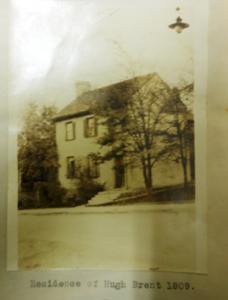
This picture of Hugh Brent’s house was recently found in a notebook compiled by Edna Whitley, Bourbon County historian, and kept in the archives of Hopewell Museum in Paris, Kentucky. Mrs. Whitley noted that the house was torn down in 1920, but she preserved this photograph in a lecture she gave which is included in the notebook. This lecture was also an article in the Register (Mrs. W.H. Whitley, A Glimpse of Paris in 1809, Vol 20, No 58 January, 1922 pp. 49-57), but was not illustrated. This house is known as the first brick house in Paris, but the site is now a vacant lot at the corner of 2nd and Main Streets.
When Hugh Brent died in Paris, KY on 16 July 1848, his obituary in The Western Citizen gave a brief summary of his life: “At his residence on High Street, July 16th, Hugh Brent. Deceased was born in Prince William County, Va on 18th January 1773. He came to KY the autumn of 1789 with his brother in law Capt Thomas Young. His father and the rest of his family moved to Kentucky about two years later and was a resident of Lexington till 1792 when he became a citizen of Paris. From that time up until 1824, he was a successful merchant when he retired from business. He was a member of the Protestant Episcopal Church.”[9]
The Third Generation
The Children of Hugh Brent, the Merchant
Thomas Young Brent, the oldest child of Hugh and Elizabeth, lived many years in Bourbon County, but eventually moved to Louisville. He and his second wife, Almyra D. Taylor, are buried in Cave Hill Cemetery in Louisville, KY. [10] Thomas carried out all the duties of the eldest son, including executor for his father’s estate, later for his father’s widow, as well as serving as head trustee of his brother in law Isaac Lewis during what was essentially a bankruptcy proceeding. He had six children in the 1860 census in Jefferson County, KY, ages 19 down to the youngest child of 6.[11]
At the time of Hugh’s death in 1848, his second son, Hugh Innis Brent had died three years before. Hugh Innis’s wife, Margaret Chambers ,[12] was from Maysville and after her husband’s death she stayed in Paris and raised their six children in Paris, clearly with the help and support of her husband’s extended family.
Charles Scott Brent, the third son, married first Susan Taylor in 1831 in Bourbon County[13] but she died shortly after the birth of their first child, Hugh Taylor Brent. His second wife Matilda Chambers [14] was a sister of his brother Hugh’s wife, Margaret. Charles was a banker, and he and Matilda raised their eleven children in Paris.[15]
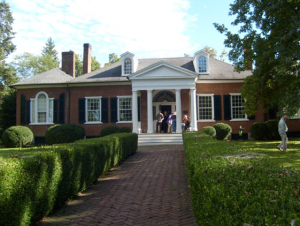
The Grange, Bourbon County, KY. U.S. 68 north from Paris. This is the house that Hugh Brent bought for his son Charles S. Brent. The house was built circa 1810-1820 by Edward Stone and named Oakland. Stone was murdered in 1826, and the house was bought by Hugh Brent and named Brentwood. By 1861 the house was sold to W.W. Fisher, who appears on the Hewett map of 1861. After 1895 the current owners, Mr. and Mrs. Sidney Green Clay renamed the house The Grange. The house has changed hands several times, but is still called The Grange.
Walter E. Langsam and William Gus Johnson, Historic Architecture of Bourbon County, Kentucky, (Paris: Historic Paris-Bourbon County, Inc. , 1985), 98. (Click to enlarge)
The first daughter Sarah, born in 1808, married Isaac Lewis in Bourbon County, KY in 1824. Isaac was from Mason County, KY. It is clear from Hugh’s will that Sarah’s husband had financial difficulties. “Thomas Y. Brent is the surety for my son in law Isaac Lewis and has loaned him several sums of money. I direct that if he should sustain any losses in his transactions with Isaac Lewis that he retain out of that portion of my estate that may be coming to my daughter Sarah the amount of such loss.”[16] Mason County records show that Isaac Lewis’ mother, Mary, also was generous to her son. “I Mary Lewis quit claim & release 80 acres of land on the North Fork of the Licking upon which the town of Lewisburg, the mill, factory and appurtenances, the said 80 acres being the original mill tract conveyed to me by my late father…”[17] On the same day, 10 April 1841, Isaac Lewis turned over all of his property to two of his mother’s relatives (Thomas Morgan Forman and Thomas Forman) and his brother in law, Thomas Y. Brent.[18] The terms of this trust required that the trustees manage the property of Isaac Lewis to make the most money to pay off his debt. Their management must have been a success because by the 1850 census, Isaac Lewis, Sarah and their five children are living in Christian County, Kentucky. Isaac owned 27 slaves on the slave schedule for that year.[19]
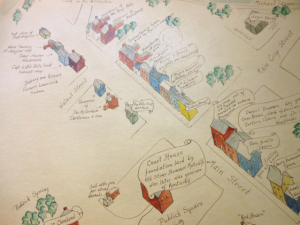
The portion of a map to the left is taken from a map of early Paris designed by Harriet Herslake in 1930. The drawing was based on the pamphlet by G.R. Keller and J.M. McCann, Sketches of Paris, Bourbon County, Kentucky, (Paris, KY: Saturday Night, G.R. Keller, 1870). The original of the map is hung in the Hopewell Museum in Paris, Kentucky.
The credits on the map also say: “respectfully dedicated to Mrs. Julia Ardery by Linda Griffith, 1984.” (Click to enlarge)
Daughter Elizabeth married Henry C. Hart in Bourbon County in 1835.[20] Henry Clay Hart was named for his uncle Henry Clay (Henry Clay’s wife Letitia, was the sister of Nathaniel Hart, Henry C. Hart’s father.) Nathaniel Hart, Henry’s father, was the son of Thomas Hart, who was one of the original proprietors of the Transylvania Company, the enterprise of Richard Henderson which ended in a financial disaster for many prospective Kentuckians, but not for Thomas Hart. Thomas Hart was a very wealthy man, and Henry Clay’s marriage to his daughter Letitia was beneficial to Henry Clay. Nathaniel Hart was engaged in the hemp business and practiced law with his brother in law Henry, in Lexington. In 1809 he married Ann Edward Gist and when the War of 1812 began he immediately organized a company of men and they headed northwest where they were engaged in the Battle of the River Raisin. Nathaniel was among those captured by the Indians, and killed. His son Henry was born in 1812, so he never knew his father. [21]
Henry Clay, John Hart, and Edward Hart were executors of Nathaniel’s estate, and Anna Gist Hart executrix.[22] Anna died in 1818 in Philadelphia.[23] No record has been found that documents who raised Henry C. Hart and his older brother Thomas, but it was likely their grandmother, Judith Bell Gist Scott who lived near Bourbon County on the Nathaniel Gist property. [Judith Gist married a second time to Charles Scott.[24] At the time of their marriage Charles Scott was Governor of Kentucky.]
Elizabeth, Henry Hart and their four children moved from Kentucky to Missouri where they are first found there on the U.S. Census in 1850 in St Louis.[25] Elizabeth and Henry were buried in the Paris Cemetery, along with a granddaughter, and their son Nathaniel G. Hart who died in 1901. [26]
Hugh Brent married one more time in 1826 to Susan R. Lewis in Fayette County, Kentucky.[27] She was fifteen years younger than Hugh and after his death she lived in Bourbon County until her death in 1860. She is the only one of his wives whose tombstone is visible in the Brent lot in the Paris Cemetery. Susan was born Susan Harrison, and was the widow of Charles Lewis when she married Hugh. She had no children, but her will names numerous siblings, nieces and nephews. The marriage contract that she and Hugh created before their marriage is referenced in a deed of trust in Bourbon County.[28] Susan tended to business and was careful to look out for her interest in Hugh’s estate, and for the rights of her step children. She gave much thought to her will, including her wish for a “nice tombstone” which it is, and her slave Ambrose who she wanted to be emancipated, but “I do not wish him to go to Liberia unless he chooses. I wish him hired out for 3 years and the money given him when he leaves.” A codicil written in September 1860, a month before she died, freed Ambrose at her death, and ordered the executor of her estate to pay him $300.[29]
After the revolution, Hugh Brent , his sons and sons- in -law were propelled out of Virginia into the new frontier across the mountains. Freed from the past, encouraged to take risks, they turned their energies to the new land of Kentucky. The Brent family fortunes grew along with the state of Kentucky as they formed a network of relationships, operating as merchants in central Kentucky. Their commitment to their communities as bankers, lawyers, and politicians was matched by their generosity. They founded churches, schools, libraries, worked for improvement of roads and supported railroad construction. The Brent energy and mercantile success contributed significantly to the prosperity of central Kentucky.
I, Rogers Roseberry Bardé returned to Kentucky in 2003 after 30 some years in New Mexico. Since I’v been back family history and Bourbon County history have become for me sort of an obsession. It makes sense since I was a history major, when I graduated from Randolph Macon Woman’s College almost 50 years ago. My mother and I worked on the Bourbon County cemetery book – known affectionately as the Grey Book – and I worked on an architectural walking tour brochure for Paris. Both projects were recognized by the Kentucky Historical Society, which was a great honor. My next project is on Humphrey Marshall, but I’m not through with the Brents, I’m afraid; people’s eyes glaze over when I get wound up about them. And I’m not related to either of them.
[1] Daughters of the American Revolution,online http://services.dar.org/members/DAR_Research/search_adb/default.cfm NSDAR Ancestor#:A014033. Service reference: Francis B. Heitman, Historical Register of Officers of the Continental Army During the War of the Revolution, 1775-1783 (Baltimore: Clearfield Co, Inc, 2003), 118.
[2] Chester Horton Brent, The Descendants of Hugh Brent: Immigrant to Isle of Wight County, Virginia, 1642 (Rutland, VT: The Tuttle Publishing Company, Inc., Reprint by Higginson Book Company, 1936), 79.
[3] William Henry Perrin, editor, History of Bourbon, Scott, Harrison and Nicholas counties, Kentucky, (Chicago: O.I. Rankin & Co, 1882), 445. See sketch of John C. Brent.
[4] Thomas Y. Brent tombstone, section H, lot 35, Cave Hill Cemetery, Louisville (Jefferson County), Kentucky. Cave Hill Cemetery database online www.cavehillcemetery.com , accessed 12 Jan 2015.
[5] Elizabeth Brent Hart, Hugh I. Brent and Charles S. Brent tombstones, section L, Brent lot, Paris Cemetery, Paris (Bourbon County), Kentucky, transcribed by the writer in March, 2014.
[6] Eric C. Nagle, Vital Records from Newspapers of Paris, Kentucky 1813-1870 (Dayton, Ohio: Ford & Nagle, 1999), 5. Elizabeth Brent obituary, The Western Citizen, Paris, Kentucky, 14 October 1817.
[7] William Kelly will (1815), Bourbon County Will Book E: 288-292, County Clerk’s Office, Paris, Kentucky.
[8] Bourbon County Marriage Book 2: 65, County Clerk’s Office, Paris, Kentucky.
[9] Eric C. Nagle, Vital Records from Newspapers of Paris, Kentucky 1813-1870 (Dayton, Ohio: Ford & Nagle, 1999), 100. Hugh Brent obituary, The Western Citizen, Paris, Kentucky, 21 Jul 1848.
[10] Thomas Y. Brent tombstone, Cave Hill Cemetery, Louisville, Kentucky.
[11] Thos Y. Brent household, 1860 U.S. census, Jefferson County, Kentucky, Louisville, Ward 2, page 572, dwelling 2015, family 3329, Roll M653_375, Ancestry.com [database on-line], accessed February, 2014.
[12] Bourbon County Marriage Book 2: 102, County Clerk’s Office, Paris, Kentucky.
[13] Bourbon County Marriage Book 2: 100, County Clerk’s Office, Paris, Kentucky.
[14] Mason County Marriage Bond Book, 1835, p. 39, County Clerk’s Office, Maysville, Kentucky.
[15] Margaret and Matilda Chambers were daughters of John Chambers, a lawyer of Mason County, KY, admitted to the bar in Maryland in 1800. He served in many governmental capacities after his move to Kentucky, including a term in Congress, and eventually was appointed the 2nd governor of the Territory of Iowa from 1841-1845. Autobiography of John Chambers, edited by John Carl Parish (Iowa City, Iowa, 1908).
[16] High Brent will (1848), Bourbon County Will Book N: 252-253, County Clerk’s Office, Paris, Kentucky.
[17] Mason County Deed Book 50: 82, County Clerk’s Office, Maysville, Kentucky.
[18] Mason County Deed Book 50: 82, County Clerk’s Office, Maysville, Kentucky.
[19] Isaac Lewis household, 1850 U.S. census, Christian County, Kentucky, District I, page 488B, dwelling 525, family 888, Roll M432_196, Ancestry.com [database on-line], accessed 23 June 2014.
[20] Bourbon County Marriage Book 2: 151, County Clerk’s Office, Paris, Kentucky.
[21] “Nathaniel Gray Smith Hart,” in The Kentucky Encyclopedia, John E. Kleber, Editor in Chief (Lexington: The University Press of Kentucky, 1992), 415-6.
[22] Nathaniel G.S. Hart will (1812) Fayette County Will Book B: 465, County Clerk’s Office, Lexington, Kentucky.
[23] Ann Hart obituary, The Kentucky Gazette, Lexington, Kentucky, 31 July 1818, page 3, column 5.
[24] Lowell H. Harrison, “Charles Scott,” in The Kentucky Encyclopedia, John E. Kleber, Editor in Chief (Lexington: The University Press of Kentucky, 1992), 803-804.
[25] H. Clay Hart household, 1850 U.S. census, St. Louis Ward 3, St. Louis (independent city), Missouri, page 294B, dwelling 123, family 128, Roll M432_416, Ancestry.com [database on-line], accessed 15 July 2014.
[26] Hart tombstones, Section L, Brent Lot, Paris Cemetery, Paris, Kentucky. Elizabeth died in 1873; Henry in 1883.
[27] Fayette County Kentucky Marriages Through 1850 (abstractor unknown; no publishing or date infromation) Brent/ Lewis marriage p. 10; Lewis/Harrison marriage p. 50.
[28] Bourbon County Deed Book 33: 299 (10 Jan 1835), County Clerk’s Office, Paris, Kentucky.
[29] Susan R. Brent will (1857), Bourbon County Will Book Q (part 1): 224, County Clerk’s Office, Paris, Kentucky.
free sample simply need to bear in mind that the that nix wish vary.




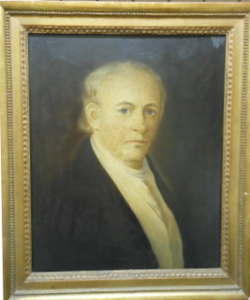
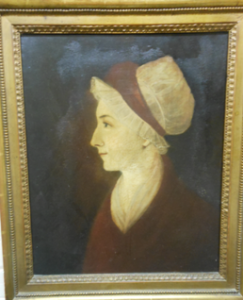


Patriicia Brent Williams
How I appreciate your fine work and dedication to the fascinating history of the Bluegrass! My ggg grandmother is Frances Brent who married John Williams, of the very active Williams family of Woodford and Bourbon. This couple became a part of the Smithton Group that settled Columbia, Boone county, MO starting in 1818.
Frances (1787-1843) is the daughter of William Brent and Ellen Brumley. I am blessed with the mind and ways of an historian, and left with the life’s work of John Brent Williams, Fanny’s son. His education was in the Black Art of journalism, which really struck his heart. He was like magic with his Missouri Telegraph – for 30 years. Fulton, Mo, 30 miles from Columbia. His paper is fillled with stories marked “Paris, please copy” – or Cynthiana. Jennie Morton Chinn was his cousin and they often visited. He was a very well-known man, and popular. So he could write fascinating stories.
Most odd was the experience of reading of his thoughts, trials, then imprisonment during the Civil War..
Fanny’s story is on her FAG, #98304154. I must rush off and will be gone until Wednesday. Hope this connects with you. Oh. Please call me Annie
Stacey Haney
I loved reading this, but it is missing a long and painful story. There was a next generation of Brent children who were sent on the orphan train from New York when the father died in war and the mother died of illness. They were sent to Stromsburg, Nebraska on the orphan train. They were all adopted by different families in the area. One of them was my relative, Lucy Brent Carlson. She has written a memoir about this experience which I have yet to get a copy of. She was adopted by my great grandmother’s twin sister and married into the Carlson family. She lived in Polk County Nebraska until she moved to California. She remained one of my grandmother’s closest friends and relatives her whole life. There is another story yet to be written.
Cheri Daniels
Stacey, Thank you so much for the additional information! We would love to have you write up an article about their plight – would make a nice addition to KAO and this story!